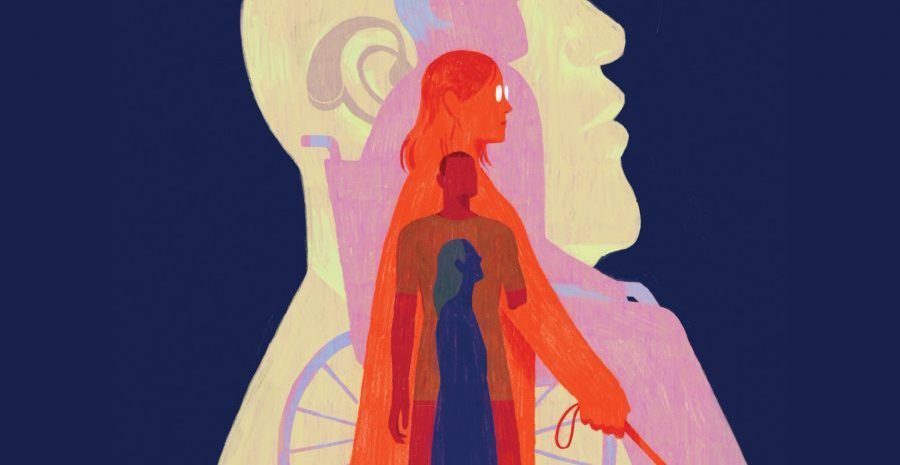By Rosemarie Garland-Thomson, New York Times – August 19, 2016
Not long ago, a good friend of mine said something revealing to me: “I don’t think of you as disabled,” she confessed.
I knew exactly what she meant; I didn’t think of myself as disabled until a few decades ago, either, even though my two arms have been pretty significantly asymmetrical and different from most everybody else’s my whole life.
My friend’s comment was meant as a compliment, but followed a familiar logic — one that African-Americans have noted when their well-meaning white friends have tried to erase the complications of racial identity by saying, “I don’t think of you as black,” or when a man compliments a woman by saying that he thinks of her as “just one of the guys.”
This impulse to rescue people with disabilities from a discredited identity, while usually well meaning, is decidedly at odds with the various pride movements we’ve come to know in recent decades. Slogans like “Black Is Beautiful” and “We’re Here, We’re Queer, Get Used to It!” became transformative taunts for generations of people schooled in the self-loathing of racism, sexism and heterosexism. Pride movements were the psycho-emotional equivalents of the anti-discrimination and desegregation laws that asserted the rights of full citizenship to women, gay people, racial minorities and other groups. More recently, the Black Lives Matter and the L.G.B.T. rights movement have also taken hold.

Yet pride movements for people with disabilities — like Crip Power or Mad Pride — have not gained the same sort of traction in the American consciousness. Why? One answer is that we have a much clearer collective notion of what it means to be a woman or an African-American, gay or transgender person than we do of what it means to be disabled.
A person without a disability may recognize someone using a wheelchair, a guide dog or a prosthetic limb, or someone with Down syndrome, but most don’t conceptualize these people as having a shared social identity and a political status. “They” merely seem to be people to whom something unfortunate has happened, for whom something has gone terribly wrong. The one thing most people do know about being disabled is that they don’t want to be that.
Yet disability is everywhere once you start noticing it. A simple awareness of who we are sharing our public spaces with can be revelatory. Wheelchair users or people with walkers, hearing aids, canes, service animals, prosthetic limbs or breathing devices may seem to appear out of nowhere, when they were in fact there all the time.
A mother of a 2-year-old boy with dwarfism who had begun attending Little People of America events summed this up when she said to me with stunned wonder, “There are a lot of them!” Until this beloved child unexpectedly entered her family, she had no idea that achondroplasia is the most common form of short stature or that most people with the condition have average-size parents. More important, she probably did not know how to request the accommodations, access the services, enter the communities or use the laws that he needs to make his way through life. But because he is hers and she loves him, she will learn a lot about disability.
The fact is, most of us will move in and out of disability in our lifetimes, whether we do so through illness, an injury or merely the process of aging.
The World Health Organization defines disability as an umbrella term that encompasses impairments, activity limitations and participation restrictions that reflect the complex interaction between “features of a person’s body and features of the society in which he or she lives.” The Americans With Disabilities Act tells us that disability is “a physical or mental impairment that substantially limits one or more major life activities.”
Obviously, this category is broad and constantly shifting, so exact statistics are hard to come by, but the data from our most reliable sources is surprising. The Centers for Disease Control and Prevention estimates that one in five adults in the United States is living with a disability. The National Organization on Disability says there are 56 million disabled people. Indeed, people with disabilities are the largest minority group in the United States, and as new disability categories such as neurodiversity, psychiatric disabilities, disabilities of aging and learning disabilities emerge and grow, so does that percentage.
Disability growth areas — if you will — include diagnostic categories such as depression, anxiety disorders, anorexia, cancers, traumatic brain injuries, attention-deficit disorder, autoimmune disease, spinal cord injuries, autistic spectrum disabilities and dementia. Meanwhile, whole categories of disability and populations of people with certain disabilities have vanished or diminished significantly in the 20th century with improved public health measures, disease prevention and increased public safety.